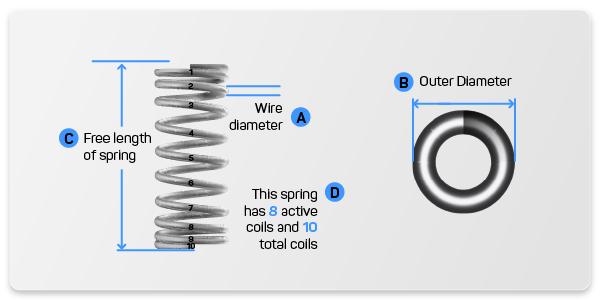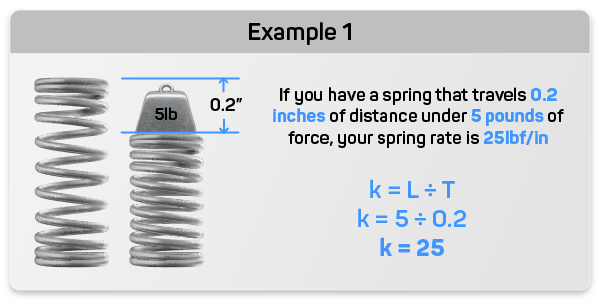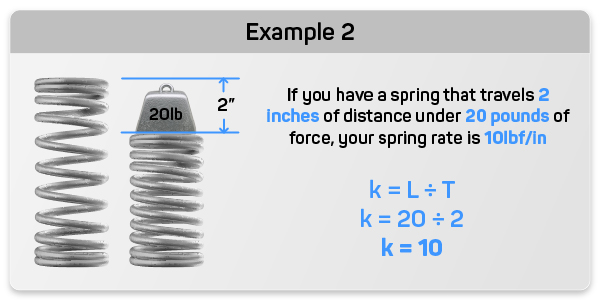Compression Spring Rate
Compression Spring Rate
Compression spring rate refers to the constant force exerted by a compression spring for each inch or millimeter of travel when subjected to an applied load. It's a crucial spring specification that helps determine whether the compression spring can meet the working loads when installed in an application. This force remains constant, with the load and travel increasing consistently. The rate is calculated based on the spring's physical dimensions, such as wire diameter, active coils, and outer diameter. Additional dimensions like inner diameter, mean diameter, and index correction can also be determined using these primary dimensions.
The Compression Spring Rate Formula
To calculate the spring rate of a compression spring based on its physical dimensions, including the material type, you can use the following formula:
k = Gd^4 / 8D^3N
Explanation of Symbols:
d = wire size (inches)D = Mean Diameter (inches)
N = Number of active coils
D / d = Index correction
G = Shear Modulus of Material
k = Spring Constant
G-Value for Common Spring Materials
Music Wire = 11.5 x 10^6Stainless Steel = 11.2 x 10^6
Phospher Bronze = 5.9 x 10^6
Monel = 9.6 x 10^6
Inconel = 11.5 x 10^6
Copper = 6.5 x 10^6
Beryllium Copper = 6.9 x 10^6
How to Measure Diagram

How to Calculate Spring Rate
To calculate the spring rate necessary to meet your working loads, simply divide the load applied to the spring by the expected travel or compression distance. The formula for compression spring rate is as follows:
Rate = Load ÷ Travel
k = L ÷ T
Let's illustrate this with examples:
Example 1.)
Suppose you have a heavy-duty spring with a free length of 1 inch and it's expected to compress by 0.2 inches under a 5-pound load. To determine the compression spring rate, divide the load (5 pounds) by the travel (0.2 inches), resulting in a rate of 25 pounds of force per inch of travel.
k = L ÷ T
k = 5 ÷ 0.2
k = 25 lbf/in

Example 2.)
Consider a compression spring with a free length of 5 inches, which is expected to compress by 2 inches under a 20-pound load. Calculating the compression spring rate involves dividing the load (20 pounds) by the travel (2 inches), yielding a rate of 10 pounds of force per inch.
k = L ÷ T
k = 20 ÷ 2
k = 10 lbf/in






